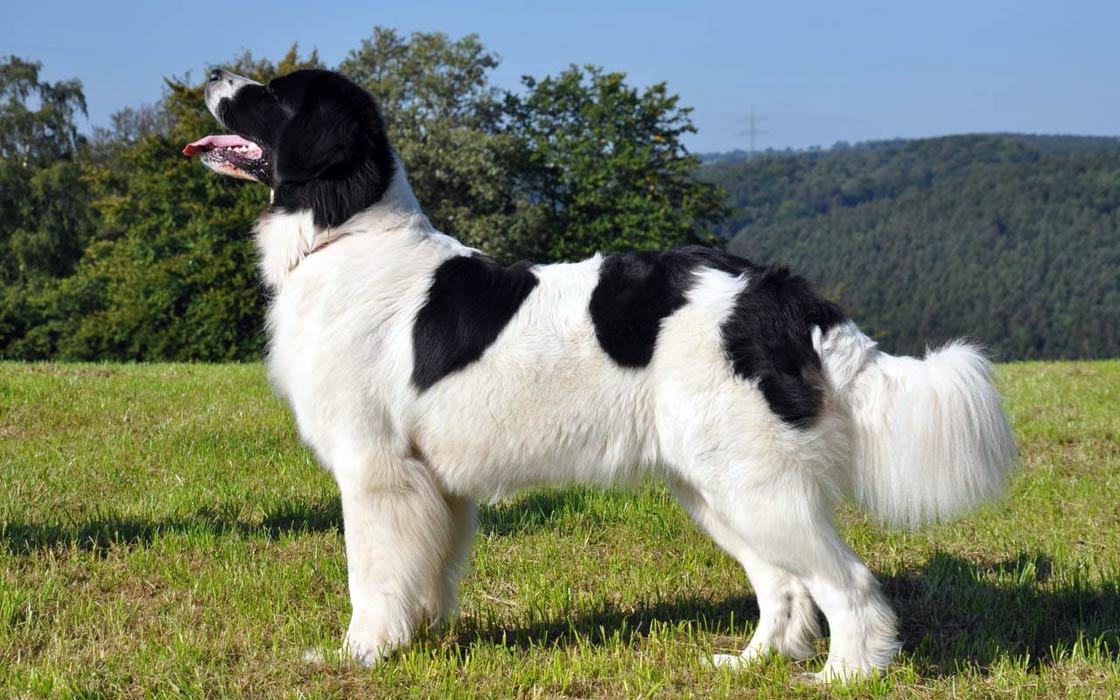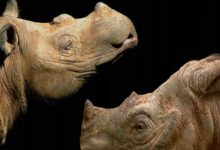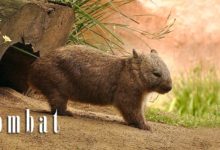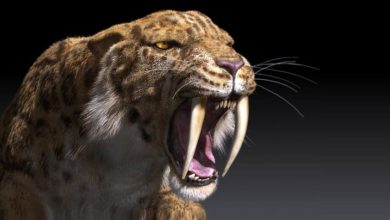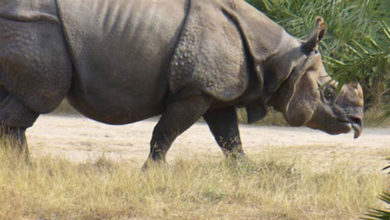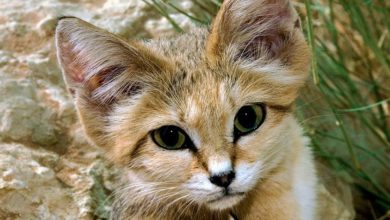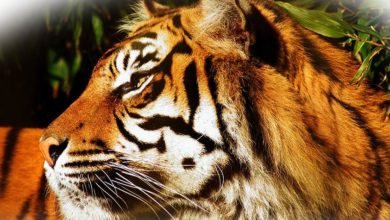The Landseer Dog: A Loyal Companion and Skilled Swimmer
In the early 19th century, an artist by the name of Sir Edwin Landseer became famous for his incredible paintings of animals, particularly dogs. One breed in particular caught his eye – a large, majestic dog with a striking black and white coat, powerful build, and gentle disposition. This breed, which came to be known as the Landseer dog, quickly gained popularity not just among artists and royalty, but among dog lovers all over Europe.
The Landseer dog’s appearance is truly remarkable – with a muscular body, broad chest, and deep-set, expressive eyes, they exude a sense of power and grace. But it’s their unique coat that really sets them apart. Landseer dogs have a base coat of white fur, with large black patches that give them a distinct “tuxedo” appearance. This striking coat pattern is what drew Sir Edwin Landseer to the breed, and it has remained one of their most defining features to this day.
But the Landseer dog isn’t just a pretty face – they’re also incredibly intelligent, loyal, and devoted to their owners. Despite their imposing size (males can weigh up to 150 pounds!), they’re known for their gentle, friendly nature and make excellent family pets. They’re also highly trainable, excelling in obedience, agility, and other canine sports.
Of course, like any breed, the Landseer dog has its share of challenges. They require a lot of exercise and mental stimulation to keep them happy and healthy, and their large size means they need plenty of space to roam. They’re also prone to certain health issues, such as hip dysplasia and bloat, so it’s important for owners to keep an eye on their dog’s health and well-being.
Despite these challenges, the Landseer dog remains a beloved breed among dog enthusiasts. Their striking appearance, intelligence, and loyalty have made them a popular choice for families, artists, and dog lovers alike. Whether you’re looking for a loyal companion or simply appreciate their majestic beauty, the Landseer dog is a breed that’s sure to capture your heart.
FCI classification
- Group 2: Pinscher and Schnauzer-Molossoid breeds, Swiss Mountain and Cattle Dogs
- Section 2.2: Molossoid breeds, Mountain type
- Without working trial

Basic Facts About the Landseer
The Landseer dog is a large breed that typically stands between 26 and 31 inches (66 to 79 cm) at the shoulder and weighs between 100 and 150 pounds (45 to 68 kg). They have a thick, waterproof coat that is predominantly white with black patches.
These dogs have a life expectancy of around 9 to 11 years and require regular exercise and mental stimulation to stay healthy and happy. They are known for their friendly, gentle personalities and make great family pets. However, they can be prone to certain health issues such as hip dysplasia and bloat, so it’s important to keep up with their veterinary care.
The Landseer dog is a beautiful and loyal breed that can make a wonderful addition to the right family.
Name etymology
The Landseer dog is named after the famous British artist Sir Edwin Landseer, who was well-known for his paintings of dogs in the 19th century. Landseer often included large, black and white dogs in his paintings, which became known as “Landseer dogs.” The breed that bears his name today is thought to have descended from these dogs, which were likely a type of Newfoundland or other large working dog. Over time, the Landseer dog became recognized as a distinct breed with its own unique characteristics and temperament.
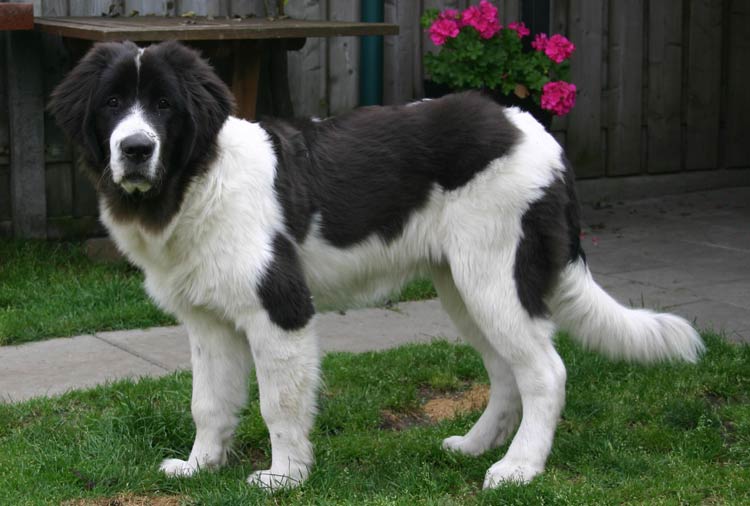
History of the breed
The history of the Landseer dog can be traced back to the early 19th century in Europe. The breed likely descended from the Newfoundland dog, which was brought to Europe from North America by fishermen and traders. These large, strong dogs were highly valued for their ability to work on boats and pull in fishing nets.
The Landseer dog as we know it today, however, owes much of its development to the famous British artist Sir Edwin Landseer. Landseer was known for his paintings of dogs, and he often depicted large, black and white dogs in his works. These dogs, which came to be known as “Landseer dogs,” were likely a type of Newfoundland that had been selectively bred for their striking appearance.
In the years that followed, the Landseer dog became increasingly popular among dog enthusiasts in Europe. They were prized for their gentle temperament, loyalty, and intelligence, as well as their striking appearance. The breed was recognized by the Swiss Kennel Club in 1910 and later by the Fédération Cynologique Internationale (FCI) in 1960.
Today, the Landseer dog remains a beloved breed among dog enthusiasts, particularly in Europe. They are often used as search and rescue dogs, as well as therapy dogs, due to their gentle nature and trainability. Despite their large size, they make excellent family pets for those who have the space and time to devote to their care.

Characteristics
The Landseer dog is a large and powerful breed that is known for its distinctive black and white coat. They typically stand between 26 and 31 inches (66 to 79 cm) at the shoulder and weigh between 100 and 150 pounds (45 to 68 kg). Their broad chest and muscular body give them a powerful and imposing appearance, but their gentle eyes and friendly expression reveal their kind and affectionate nature.
The Landseer dog’s thick coat is water-resistant and helps to protect them in cold or wet weather. It is predominantly white with large black patches, which gives them their striking “tuxedo” appearance. The black patches usually cover the dog’s head, back, and tail, while the rest of its body is white. Some Landseer dogs may also have black spots on their white coat.
The Landseer dog’s head is large and broad, with a slightly rounded skull and a short muzzle. Their ears are triangular and hang down close to their head, while their eyes are deep-set and expressive. They have strong neck, broad shoulders, and a powerful, well-muscled body that is designed for strength and endurance.
Overall, the Landseer dog is a striking and powerful breed that is sure to turn heads wherever they go. Their unique appearance, combined with their gentle and affectionate nature, make them a beloved breed among dog enthusiasts all over the world.

Behavior
The Landseer dog is known for its gentle, affectionate, and loyal nature. They are highly social animals and love spending time with their owners and other people. They are typically friendly with strangers and are often used as therapy dogs due to their calm and comforting demeanor.
Despite their large size and imposing appearance, Landseer dogs are not aggressive and are generally good with children and other pets. However, they do require regular socialization and training to ensure that they develop good manners and behavior.
Landseer dogs are also highly intelligent and trainable. They are eager to please their owners and respond well to positive reinforcement training methods. They excel at activities such as obedience, agility, and search and rescue, and can make excellent working dogs in the right environment.
However, because of their size and strength, it’s important to provide proper exercise and mental stimulation to prevent boredom and destructive behavior. They require daily walks and playtime, as well as activities that challenge their minds and keep them engaged.
The Landseer dog is a gentle and loyal breed that makes a great family pet for those who have the space and time to devote to their care. They thrive in social environments and are happiest when they are able to spend time with their owners and be included in family activities.

Temperament
The Landseer dog is known for its gentle and loving temperament. They are highly sociable animals that crave human companionship and are happiest when they are around people. They are loyal and devoted to their owners and will often form strong bonds with them.
Landseer dogs are typically good with children and other pets and are known for their patient and gentle nature. They are not aggressive and will often go out of their way to avoid confrontations. However, they do require proper socialization and training to ensure that they behave appropriately around other people and animals.
One of the most distinctive features of the Landseer dog’s temperament is its calm and steady demeanor. Landseer dogs are not easily excitable and have a calming effect on those around them. This makes them popular as therapy dogs and they are often used in hospitals and nursing homes to provide comfort to patients.
While Landseer dogs are known for their gentle nature, they are also highly intelligent and can be trained to perform a variety of tasks. They excel in activities such as obedience, agility, and search and rescue and are often used as working dogs in these fields.
Overall, the Landseer dog is a gentle and loyal breed with a calm and steady temperament. They make excellent family pets for those who have the space and time to devote to their care and are sure to bring love and joy into any home.

Recommended types of training for this breed
Landseer dogs are intelligent and trainable, and they thrive when they have a job to do. They are eager to please their owners and respond well to positive reinforcement training methods. Below are some types of training that are recommended for this breed:
- Obedience Training
This type of training focuses on teaching your dog basic commands such as sit, stay, come, and heel. Obedience training is essential for every dog, and it helps to establish a good relationship between the dog and its owner. - Socialization Training
Landseer dogs are social animals, and they require proper socialization to ensure that they behave appropriately around other people and animals. Socialization training involves exposing your dog to different types of people, animals, and environments to help them become well-adjusted and confident. - Agility Training
Landseer dogs are athletic and enjoy physical activity. Agility training involves teaching your dog to navigate through obstacles such as tunnels, jumps, and weave poles. This type of training helps to improve your dog’s coordination, balance, and stamina. - Water Training
Landseer dogs are known for their love of water, and they are excellent swimmers. Water training involves teaching your dog to swim and retrieve objects from the water. This type of training is not only fun for your dog, but it also helps to improve their overall fitness and health. - Therapy Training
Landseer dogs are calm and gentle, and they make excellent therapy dogs. Therapy training involves teaching your dog to provide comfort and emotional support to people in hospitals, nursing homes, and other settings.
Landseer dogs are versatile and enjoy a variety of activities. Training your Landseer dog is not only important for their physical and mental well-being, but it also helps to strengthen the bond between you and your dog.
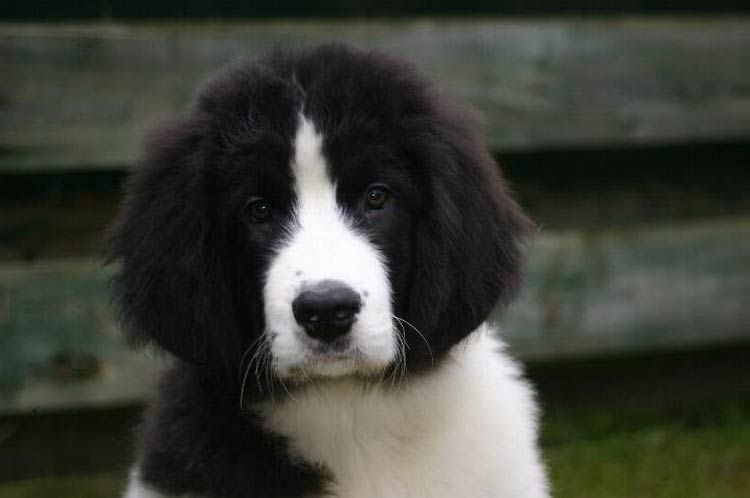
Health condition
The Landseer dog is generally a healthy breed, but like all dogs, they can be prone to certain health conditions. Some of the health conditions that have been reported in Landseer dogs include:
- Hip Dysplasia
This is a genetic condition that affects the hip joints, causing pain and discomfort. It occurs when the hip joint does not develop properly, leading to wear and tear of the joint over time. Hip dysplasia can be managed through medication, weight management, and surgery in severe cases. - Ear Infections
Landseer dogs have floppy ears that can trap moisture and dirt, making them prone to ear infections. Regular cleaning and maintenance of the ears can help prevent infections from occurring. - Heart Conditions
Landseer dogs can be prone to heart conditions such as mitral valve disease and dilated cardiomyopathy. These conditions can be managed through medication and regular monitoring. - Cystinuria
This is a genetic condition that causes the formation of bladder and kidney stones. Cystinuria can be managed through medication and dietary management. - Bloat
Landseer dogs are a large breed, and they can be prone to bloat, a potentially life-threatening condition that occurs when the stomach twists on itself. Bloat requires immediate veterinary attention and can be prevented by feeding your dog smaller, more frequent meals and avoiding vigorous exercise after meals.
To ensure that your Landseer dog remains healthy, it’s important to provide them with regular veterinary care, a balanced diet, and plenty of exercise. Regular check-ups and early intervention can help prevent or manage health conditions before they become more serious.
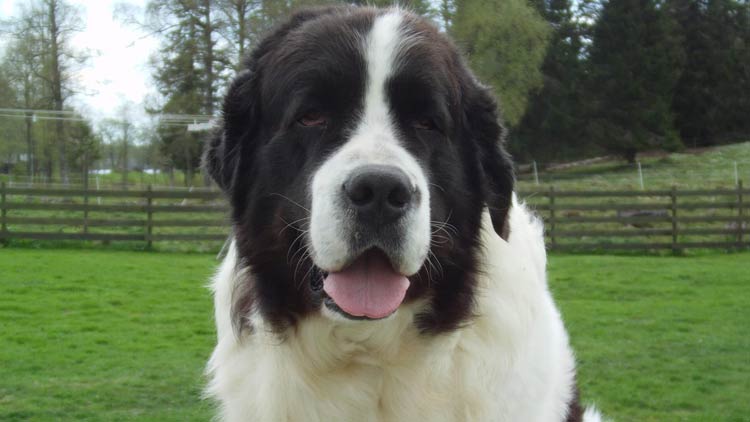
Diet
A balanced and nutritious diet is essential for the health and well-being of Landseer dogs. As a large breed, they require a diet that is rich in protein and other essential nutrients to support their growth and development.
When choosing a diet for your Landseer dog, it’s important to consider their age, activity level, and overall health. Puppies require more calories and nutrients than adult dogs, and senior dogs may have different dietary needs than younger dogs.
A high-quality commercial dog food that is specifically formulated for large breed dogs is a good option for Landseer dogs. Look for a food that lists meat as the first ingredient and contains a balanced ratio of protein, fat, and carbohydrates. Avoid foods that contain fillers, artificial preservatives, and colors.
In addition to commercial dog food, Landseer dogs can also benefit from fresh fruits and vegetables as a source of vitamins and fiber. Some good options include carrots, sweet potatoes, blueberries, and spinach. However, it’s important to avoid feeding your dog foods that are toxic to dogs, such as grapes, onions, and chocolate.
Feeding your Landseer dog several small meals throughout the day rather than one large meal can help prevent bloat, a potentially life-threatening condition that can occur in large-breed dogs.
Always provide your Landseer dog with fresh, clean water, and monitor their weight and overall health to ensure that they are getting the proper nutrition they need. Consult with your veterinarian for specific dietary recommendations based on your dog’s individual needs.
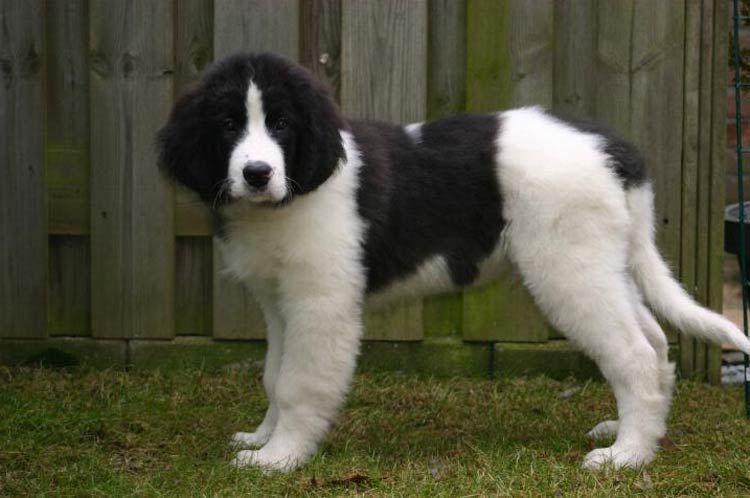
Reproduction and parenting
Landseer dogs are a large breed that typically reach sexual maturity between 6 and 12 months of age. Females generally come into heat twice a year, with each heat lasting for about three weeks. During this time, they may become more vocal and exhibit changes in behavior, such as increased affection towards their owners.
If you’re considering breeding your Landseer dog, it’s important to have a thorough understanding of the breeding process and the responsibilities of raising a litter of puppies. Breeding should only be done by experienced breeders who have the knowledge and resources to ensure the health and welfare of both the mother and the puppies.
Pregnancy in dogs lasts for approximately 63 days, and during this time, the mother should receive regular veterinary care and a balanced diet to support her health and the development of her puppies. Once the puppies are born, they will require round-the-clock care and attention, including regular feedings, socialization, and veterinary check-ups.
If you’re not prepared to take on the responsibilities of breeding and raising a litter of puppies, it’s important to spay or neuter your Landseer dog. Spaying and neutering not only helps prevent unwanted litters, but it can also have health benefits for your dog, such as reducing the risk of certain types of cancer and behavioral issues.
Breeding and raising puppies is a significant responsibility that should not be taken lightly. If you’re considering breeding your Landseer dog, it’s important to do your research and work with a reputable breeder or veterinarian to ensure the health and welfare of your dog and her puppies.

Interactions with humans
Landseer dogs are known for their gentle and friendly nature, and they tend to be very affectionate towards their owners. They are a social breed that thrives on human companionship and enjoys spending time with their family.
Landseer dogs are also known for their patience and tolerance with children, making them a popular choice as family pets. However, as with any dog breed, it’s important to supervise interactions between children and dogs to ensure that both are safe and comfortable.
Proper socialization and training are key to ensuring that Landseer dogs interact well with humans and other animals. Early socialization can help your Landseer puppy learn to interact positively with people and other animals, and it can help prevent behavior issues down the road.
Positive reinforcement training techniques, such as clicker training and reward-based training, are effective ways to train Landseer dogs. These methods focus on rewarding desired behaviors rather than punishing unwanted behaviors, which can help build a positive relationship between you and your dog.
Landseer dogs are a friendly and social breed that thrives on human interaction. With proper socialization and training, they can make wonderful family pets and loyal companions.
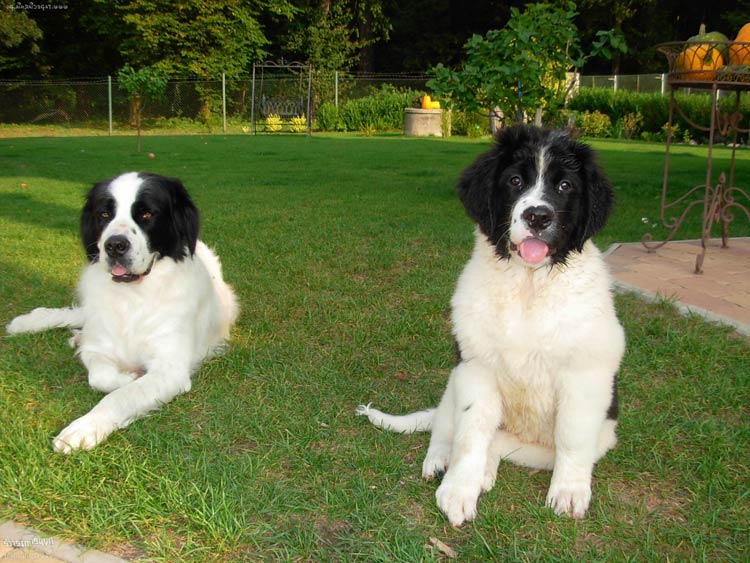
Population
The population of the Landseer dog breed is relatively small compared to some of the more popular breeds. In many countries, including the United States, the breed is considered to be rare. This is partly due to the fact that the breed was only officially recognized by the American Kennel Club (AKC) in 2010.
According to the AKC, the Landseer breed is currently ranked 153rd out of 197 breeds in terms of popularity in the United States. While this is still a relatively low ranking, the breed has seen an increase in popularity in recent years, with more people discovering the breed’s unique characteristics and temperament.
In Europe, where the breed originated, Landseer dogs are more common, particularly in countries like Germany, Switzerland, and the Netherlands. However, even in these countries, the breed is considered to be relatively uncommon.
Despite their relatively small population, Landseer dogs have a dedicated following of breed enthusiasts who are passionate about preserving the breed and promoting its unique qualities. Breed clubs and organizations, such as the Landseer ECT Club of America and the Landseer Club of Switzerland, work to promote responsible breeding and educate the public about the breed.

The Landseer dog vs. the Newfoundland dog
The Landseer dog and the Newfoundland dog are two breeds that are often compared to one another due to their similar appearance and history. While the two breeds share many similarities, there are also some notable differences between them.
Similarities:
- Both breeds are large, muscular dogs that were originally bred for water rescue and working in cold climates.
- They both have a thick, water-resistant double coat that requires regular grooming to keep it in good condition.
- Both breeds are known for their gentle and friendly nature, and they tend to be good with children and other animals.
- They both require regular exercise and socialization to stay healthy and happy.
Differences:
- The Landseer dog is a separate breed from the Newfoundland dog, although they share a similar history and appearance. The Landseer dog is a relatively new breed, having been officially recognized by the American Kennel Club (AKC) in 2010.
- The Landseer dog is generally slightly smaller than the Newfoundland dog, with males typically weighing between 110 and 150 pounds (50-68 kg) and females weighing between 99 and 130 pounds (45-59 kg). In comparison, Newfoundland dogs can weigh up to 150 pounds (68 kg) or more.
- The coat of the Landseer dog is usually white with black markings, while the coat of the Newfoundland dog is typically black, brown, or gray.
- The head of the Landseer dog is typically more refined and wedge-shaped than the broad, square head of the Newfoundland dog.
- While both breeds are known for their sweet temperament, the Landseer dog tends to be slightly more active and energetic than the laid-back Newfoundland dog.
Overall, the Landseer dog and the Newfoundland dog are two breeds that share many similarities but also have some notable differences. If you are considering adding one of these breeds to your family, it’s important to do your research and consider which breed’s temperament, exercise requirements, and grooming needs will best fit your lifestyle.
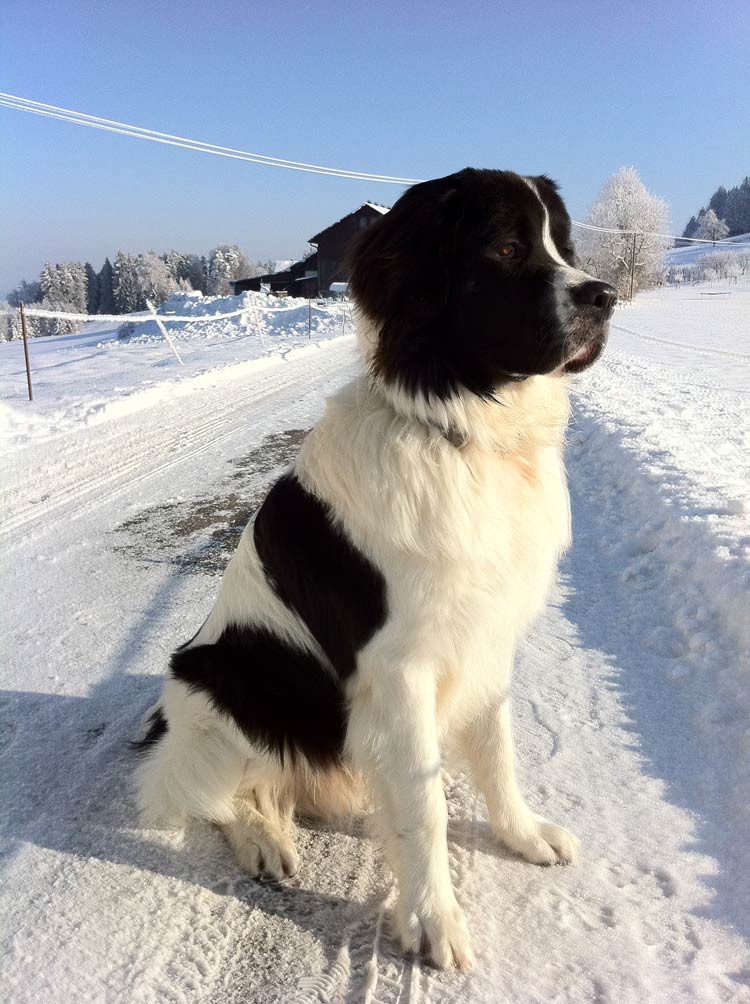
Detailed data / dimensions (size)
The Landseer
- Height at the withers:
- Males: 28-31 inches (71-79 cm)
- Females: 26-28 inches (66-71 cm)
- Weight:
- males: 110-150 pounds (50-68 kg)
- females: 99-130 pounds (45-59 kg)
- Lifespan: 9-11 years
- Number of puppies: 6-8 puppies.
- Max speed: The Landseer is not known for its speed, as it was originally bred for water rescue and not for running. However, it is a strong and capable swimmer and can move quickly in the water when needed.

The Landseer dog in culture
The Landseer dog has made its mark in popular culture, often being depicted as a loyal companion and a symbol of strength and courage. Here are a few examples of the Landseer dog in various forms of media:
- In the novel “The Three Musketeers” by Alexandre Dumas, the character Planchet has a Landseer dog named Mysouff.
- The Landseer dog has been featured in several works of art, including a painting by Sir Edwin Landseer (after whom the breed is named) titled “A Distinguished Member of the Humane Society” which features a Newfoundland dog (which the Landseer was originally bred from) rescuing a drowning man.
- The Landseer dog has also been featured in movies and TV shows, including the Disney film “The Ugly Dachshund” and the Canadian TV series “Road to Avonlea.”
- The Landseer dog has been used as a symbol of strength and courage, with its image appearing on everything from postage stamps to beer labels.
- The Landseer dog has also been used in advertising campaigns, with companies such as Budweiser and Dulux featuring the breed in their commercials.
The Landseer dog has become a beloved breed in popular culture, recognized for its loyalty, strength, and gentle nature.
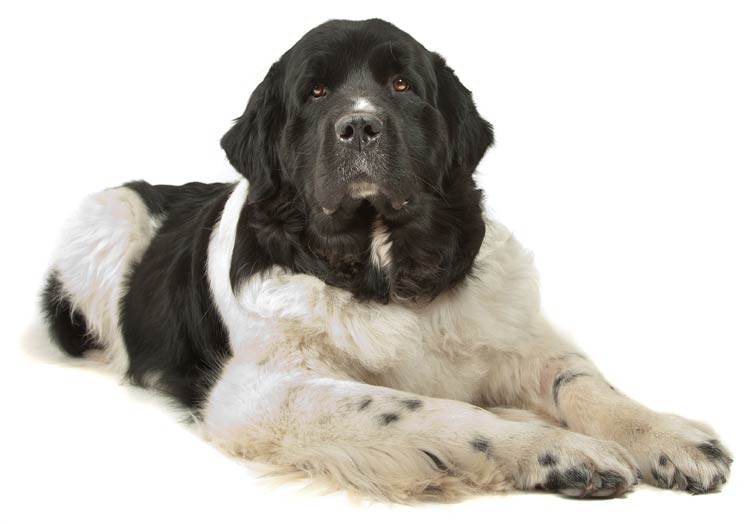
The Landseer dog in movies
The Landseer dog has made appearances in a number of movies throughout the years. Here are some notable examples:
- “The Ugly Dachshund” (1966) is a Disney film in which a Landseer named Brutus is mistakenly identified as a dachshund, leading to a series of comedic mishaps.
- In the 1992 movie “Beethoven,” a Landseer named Chris plays a supporting role as a member of the St. Bernard family.
- The Landseer dog also appears in the 2012 film “For Greater Glory,” which tells the story of the Cristero War in Mexico.
- In the 2016 film “A Dog’s Purpose,” a Landseer named Ellie plays a supporting role as a search and rescue dog.
- Additionally, Landseer dogs have been featured in various television shows, including “Little House on the Prairie,” “Road to Avonlea,” and “The Nanny.”
The Landseer dog has proven to be a versatile and lovable breed, capable of playing a variety of roles on the big and small screens.
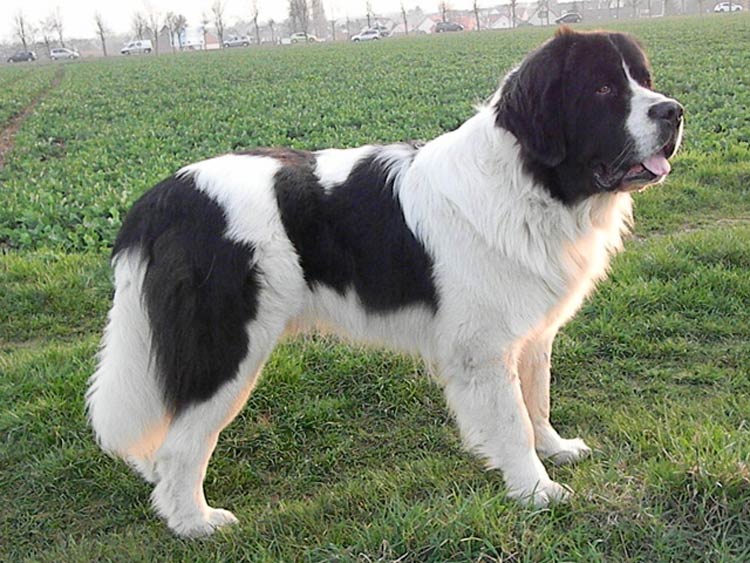
Interesting facts about the Landseer dog
- The Landseer is named after Sir Edwin Landseer, a British artist who was known for his paintings of animals, including the Newfoundland dog (which the Landseer was originally bred from).
- The Landseer is often mistaken for a black and white Newfoundland dog, but it is actually a separate breed recognized by the American Kennel Club since 2010.
- The Landseer dog is a great swimmer and is known for its love of water, making it an excellent choice for water rescue work.
- The Landseer is a gentle and affectionate breed that is known for being great with children and other pets.
- Despite its large size, the Landseer is known for being relatively low-energy and is content with moderate exercises, such as daily walks and swimming sessions.
- The Landseer dog has been used as a symbol of rescue and courage, with its image appearing on various official badges and logos for water rescue teams.
- In some countries, the Landseer is considered a rare breed, with only a small number of registered dogs each year.
- The Landseer dog has a thick double coat that requires regular grooming to keep it clean and tangle-free.
- Landseer dogs have a unique bark that sounds like a combination of a bark and a howl.
- The Landseer dog is sometimes called the “Gentle Giant” due to its friendly and affectionate nature combined with its large size.
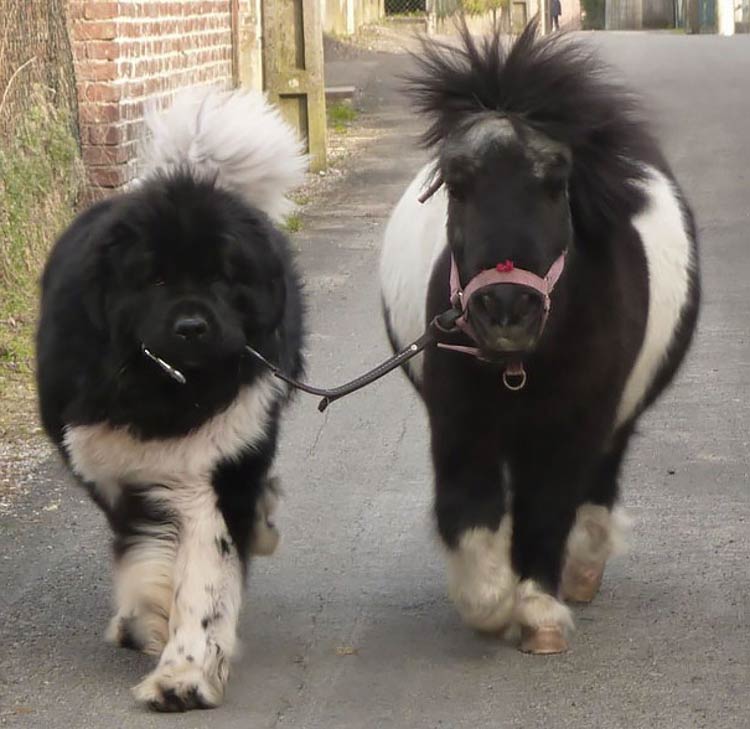
Q&A (questions and answers) about the Landseer dog
Q: What is the origin of the Landseer dog?
A: The Landseer dog originated in Canada and is named after the British artist Sir Edwin Landseer who painted many pictures of Newfoundland dogs.
Q: What is the size of a Landseer dog?
A: Male Landseer dogs typically stand between 28-31 inches (71-79 cm) at the shoulder and weigh between 130-150 pounds (59-68 kg), while female Landseer dogs are slightly smaller and stand between 26-28 inches (66-71 cm) and weigh between 100-120 pounds (45-54 kg).
Q: What is the temperament of a Landseer dog?
A: The Landseer dog is known for being gentle, affectionate, and loyal. They are also patient with children and are good with other pets.
Q: What is the life expectancy of a Landseer dog?
A: The average lifespan of a Landseer dog is 8-10 years.
Q: Is the Landseer dog a good swimmer?
A: Yes, the Landseer dog is an excellent swimmer and enjoys water activities. They were originally bred for water rescue work.
Q: What is the Landseer dog’s coat like?
A: The Landseer dog has a double coat that is thick and water-resistant. The outer coat is medium-length and the undercoat is soft and dense.
Q: What is the Landseer dog’s exercise requirement?
A: The Landseer dog needs daily exercise but is content with moderate activity such as a daily walk or swim. They are not high-energy dogs.
Q: Is the Landseer dog good for families?
A: Yes, the Landseer dog is known for being great with children and other pets. They are gentle and patient, making them a good choice for families.
Q: Is the Landseer dog recognized by the American Kennel Club?
A: Yes, the Landseer dog was recognized by the American Kennel Club in 2010 as a separate breed from the Newfoundland dog.
Q: What is the Landseer dog’s grooming requirement?
A: The Landseer dog needs regular grooming to keep their coat clean and free from tangles. They shed heavily twice a year and require more frequent brushing during those times.

Recommended
- The smartest dogs
- The tallest dogs
- The most aggressive dogs
- The oldest dogs
- Pets
- Dogs
- Cats
- Wild cats
- The fastest animals
- The fastest birds
- The largest eagles

